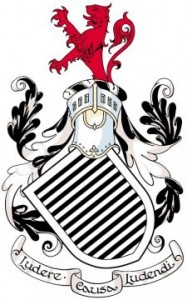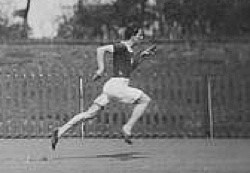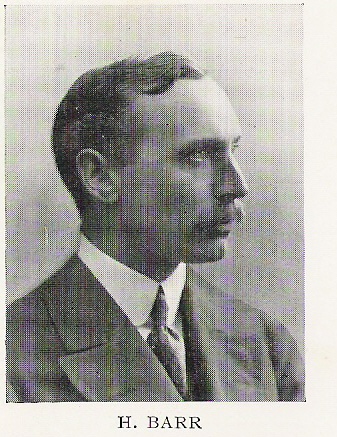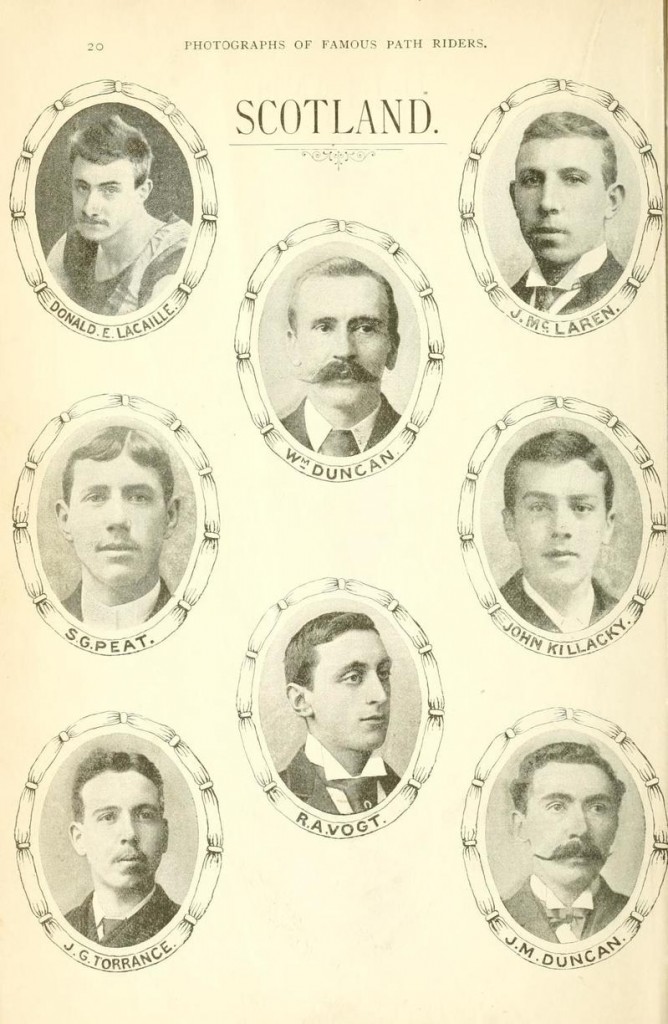“The Queen’s Park Sports held on Saturday at Hampden were a great success. At the start there was a small attendance, but as the afternoon wore on, the numbers were largely augmented. It was indeed estimated that between 8000 and 10,000 persons were present. The weather was delightfully fine from a spectators point of view, but from a competitor’s, the high wind had an influence on the running, only the men in the best of training being able to cope with it. The entries amounted to a record, the aggregate being 348. Mr James Allan was convener of the Sports Committee which consisted of seventeen members. The judges were:- Messrs AM Donaldson, Thomas Fraser, Thomas Lawrie, A McNab, F Matheson and John Mellish. Referee of Foot Races: Mr AM Hunter; Handicapper: Mr R Livingstone; Timekeeper: Mr AG Rennie; Starter: Mr Robert Hindle; Clerk of the Course: Mr Stewart Lawrie. The proceedings were enlivened by the band and pipers of the Scots Fusiliers.”
That is the entire report of the Sports held on 6th June, 1891 – apart from the results of course. There were twelve Heats of the 100 yards and there were several well known names among the Heat winners. eg Finlayson of Queen’s Park (4 yards), Alf Downer of Watson’s (6 yards), W Maley of Celtic (5 yards), T Maley of Celtic (2 yards), JS Weir, Milngavie Club (2 1/2 yards) and H Espie, Glasgow Academicals (5 yards). There were four semi finals and the first three in the final were Lander (EUAC), Carswell (Clydesdale FC) and Young (WSH). 27 started in the mile with holder, ‘the veteran Duncan’ off scratch. It was won by J Hindle of St Mirren off 70 yards from JS Morrison of Edinburgh Harriers 40 yards, and Charles Pennycook, Clydesdale Harriers off 25 yards. The 440 was an interesting race in that John Blane of Clydesdale Harriers, a noted miler, was was running off 15 yards. The final was won by Woodburn (WSH)from Currie (unattached) and Young (WSH). The half mile was won by Morrison of Edinburgh (15) from Malcolm of Clydesdale Harriers (10). J Gow of Rangers won his Heat of the 120 yards hurdles but as he ‘skipped a hurdle’ he was disqualified, the race going to Carswell of Clydesdale Football Club. The 600 yards race was won by Hindle (St Mirren) running from 15 yards from T Blair (QPFC) who was scratch man. The high jump was won by R Williams of EUAC, There were also several good cycle races with top men such as RA Vogt competing.
It had been a good day and takings amounted to £170 and the attendance was a record for an athletic meeting.
AR Downer
In 1892 the “Scottish Referee” reported that “Never in the history of QP has such a successful meeting – financially and as regards the quality of the sport – been held by the premier club than that of last Saturday at Hampden. Despite the wet weather, between nine and ten thousand spectators braved the elements, and eagerly watched the various events. Public interest of late has developed to a remarkable degree in athletic matters. Principally this is due to the the great performances of our crack cyclists, one or two of whom are every now and again smashing records. … We heartily congratulate the QP on their successful meeting and a word of praise is due to the admirable manner in which all the arrangements were carried through by the officials, not a moment being lost in facilitating the progress of various events.”
Some of the track running highlights:
- Hugh Barr, Clydesdale Harriers, international long jumper, won the 100 yards. NA MacLeod was second and the comment was that all three had physiques far above the average.
- George Woodburn (WSH) won the 440.
- Two runners were conspicuous by their absence: JR Gow (Rangers) missed the 120 yards hurdles because he felt a bit stiff, and sprinter McCulloch missed the train from Helensburgh.
- Mitchell beat Malcolm in the 880 yards, both of scratch, in 2 min 01 3-5th sec.
- Pennycook we see has resorted to hils old style of throwing his head back. This means a loss of about 30 yards in the mile. and we would advise him to adopt the style he was running in early in the season.
The handicapper also came in for some criticism: the winner of the miles was Gavin Stevenson and Pennycoock had said it was useless to try to beat him. The ‘Referee’ said this showed wisdom: apparently they had both started off scratch earlier in the season and now Stevenson was off 40 yards. “It seems inexplicable,” said the reporter. Although the sports had been a success, the club itself came in for some criticism: the pavilion was quite inadequate to accommodate all the participants and the recommendation was that the tent should again be called into requisition.
June 3rd, 1893, and another successful meeting at Hampden. Over £300 taken at the gate, glorious weather, a good programme and the “classic slopes” were packed. A crowd of almost 15,000 was in attendance on the day, and the stand was particularly patronised by youth and beauty. Records were set in the cycling and although Alf Downer could not make it, McCulloch from Helensburgh, the favourite was beaten in the 100 yards. RA Vogt was unquestionably the most popular of the top cyclists and, just returned from racing in Paris, he turned out here to the delight of the crowd. Lacaille was one of the top cyclists and he was the source of some controversy – which could well have repercussions later in the season. I quote from ‘The Scottish Referee’:
An incident of the meeting was Lacaille being handicapped on the ground and allowed to start in the mile handicap by Judge Kettles, who probably allowed his sportsmanlike feelings to override his judgement and the Union’s rules. The judge of the Three Miles was AM Donaldson, whose more legal mind could not brook the inconsistency of opening the entries for the sake of one man, which would not have been tolerated had he been a second rater, and he requested Lacaille not to start in that race. It is all very well to ask the permission of the other competitors, but the usually have the choice of saying “yes” or appearing unsportsmanlike, and their good nature should not be taxed to that extent. Rules, especially those of a Union, were not made to be broken, and those who conform to them should not be placed at the mercy of those who do not.”
The acceptance of late entries by ‘big name’ athletes in competitions or road races is still at times a source of controversy more than 125 years later. As far as the track was concerned, one of the best English cyclists was quoted as saying it was a good track but would be better if it were banked. Although it was somewhat narrow it compared favourably with some of the English tracks. Cycling was indeed having a purple patch as far as sports meetings were concerned but it would not last and ten years or so later the tale would be different. Some of the 1883 results from Hampden:
100 yards: D Vass, Ayr FC, 9 yards, 10 3-5th sec; 220 yards: DR McCulloch, Clydesdale Harriers, scratch, 23 3-5th sec
120 yards hurdle race: 1. J Lander, EUAC, 15 yards; 2. J Gow, Rangers FC, 25 yards; 3. A Graham, 1st LRV, 18 yards
Quarter Mile: R Shandley, Celtic FC, 25 yards, 50 4-5th sec; Half Mile: J Hindle, St Mirren FC and Clydesdale H, 10 yards 2:02
One Mile: A McDonald, Abercorn FC, 50 yards, 4 min 33 sec;
Broad Jump: 1. Don C Sillars, QPFC, 22′ 1″; 2. Peter McCallum, QPFC, 21′ 6 1/4″ ([Sillars was QP team captain, and McCallum was ex-President]
High Jump: Murray, Rangers, 10″ handicap, 5′ 9″
The top cyclists of the 1880’s-90’s
2nd June, 1894 and again the ‘Scottish Referee’ and other papers were looking forward to another successful QPFC Sports. BUT
“All the work of the past month , the care bestowed on the track by Mr Geake, the perfect arrangements made by the secretary and committee for the successful working of the annual carnival at Hampden, and the presence of a large number of the youth and beauty of Crosshill, Langside &c, had no effect on Jupiter Pluvius, who, at the worst possible hour of the afternoon, made his unwelcome appearance, and succeeded in completely spoiling the financial success of the sports. But although the QP executive were robbed of financial success, so well deserved, that not even J.P. could rob them of an athletic triumph achieved under conditions which might have damped the ardour of the most enthusiastic.
“From the opening Heat of the 100 yards to the presentation of prizes by Mrs WH Berry, every item on the programme was carried out with that promptitude and accuracy which has all along characterised Queen’s Park meetings, and has made them so deservedly popular with the public. AG Stronach, Glasgow Academy, competed in the high jump at the Queen’s Park Sports. He got over 4′ 10”
That’s twice in two meetings that the reporter has mentioned the ‘youth and beauty’ of Crosshill and Langside!
It was in many respects quite an amazing meeting. For instance the committee had decided to run ten men in each heat of the 100 yards. “It was a striking scene to see the sprinters tearing down the turf in such numbers.” They were lucky in that the wind and rain were behind them; the final was won to everyone’s surprise by Gordon of Hamilton Academicals from Frame of Carluke Beagles. 49 men were on the cinder track, in the rain for the Mile, won by McMorrow of WSH and Celtic FC. The Long Jump was won by WC Taylor (handicap allowance of 1′ 9″) from T Vallance, a nephew of the jump record holder. AAG Stronach was second in the high jump to Carr of Maryhill Harriers.
Despite the weather, the meeting was a success after all. Apart from anything else, the sight of ten men sprinting side by side with the wind and rain hurling them down the track must have been wonderful. Just to confirm how bad the conditions were:,the ‘Glasgow Herald simply reported “Unfortunately the weather completely broke down immediately after noon, and rain descended in torrents about two o’ clock thus completely spoiling the meeting, both from a sports point of view and the attendance of the public.”
*
But all was not well in the world of athletics and there was a split between the biggest and most powerful club in the land, Clydesdale Harriers, and the SAAA which led to the former setting up an opposition organisation called the Scottish Amateur Athletic Union. There were rival meetings and there were two Scottish Championships held in Glasgow on 22nd June, 1895: SAAA at Hampden and SAAU at Ibrox. There was also an SAAA sponsored meeting at Hampden on 3rd June. If there was a separate QPFC meeting in 1895, it was not in May or June. The assumption is that it was just squeezed out, a victim of a feud not of their making. There does not seem to have been a QPFC Sports in 1896 either – the Govan Police Sports at Ibrox on the first Saturday and the Glasgow Police Sports on the second Saturday along with the Clydesdale Harriers Sports on the same day were the only meetings in Glasgow in the first half of the month.



